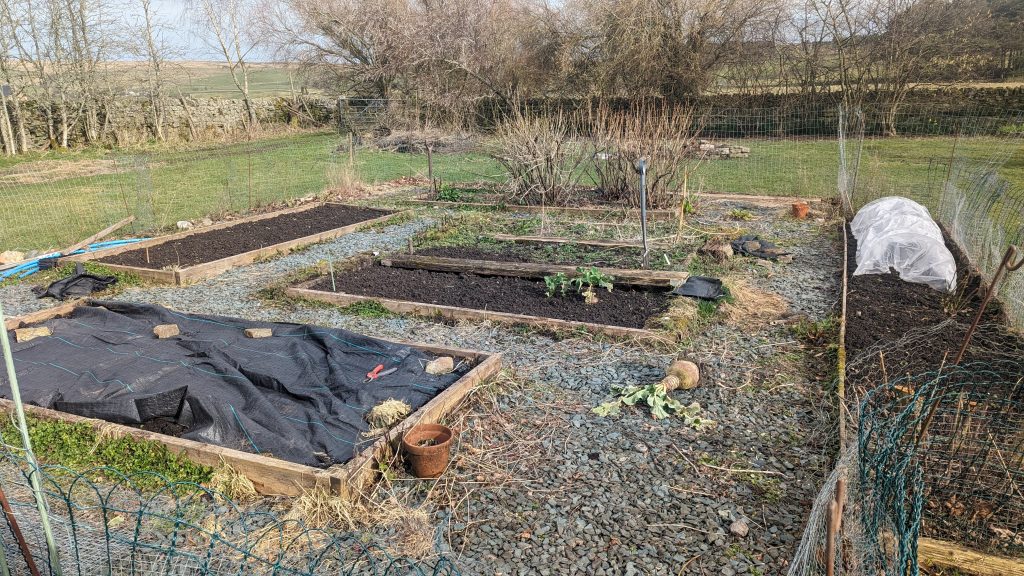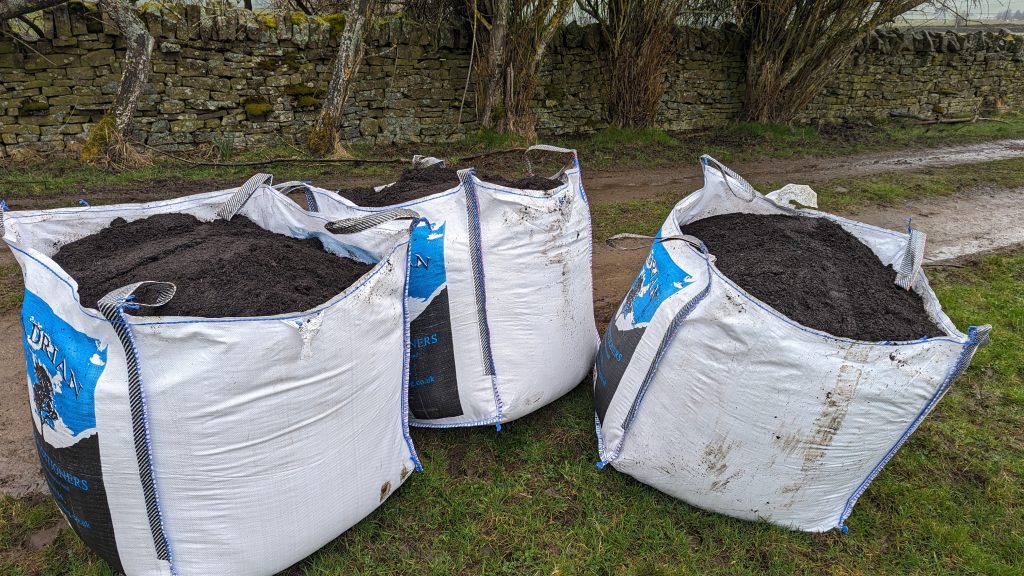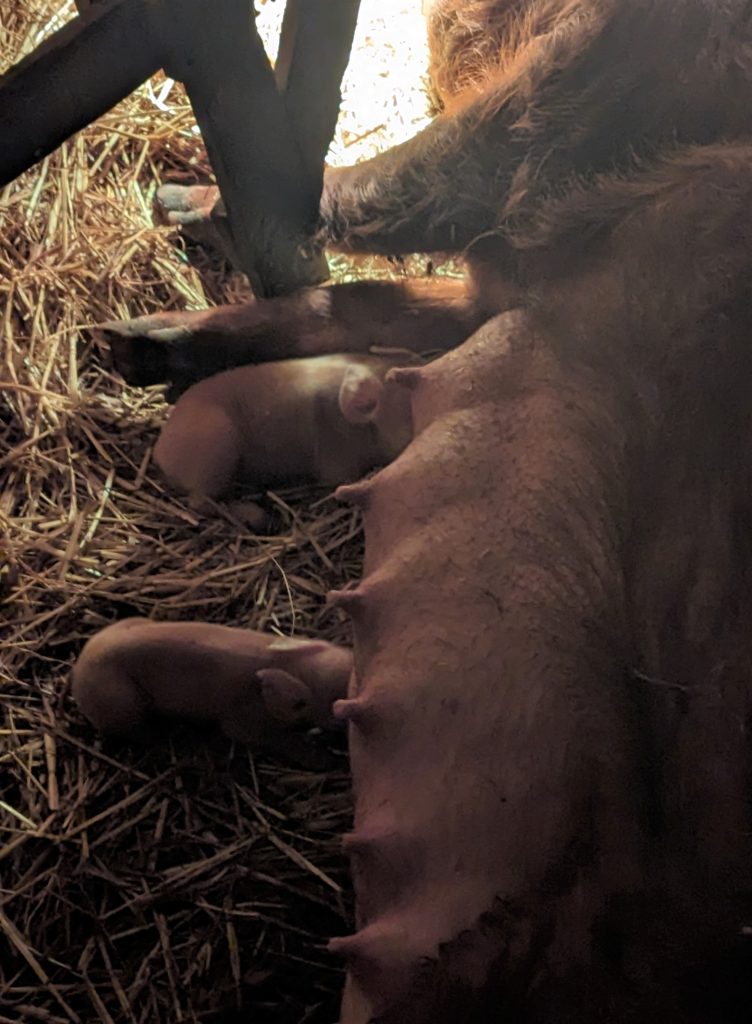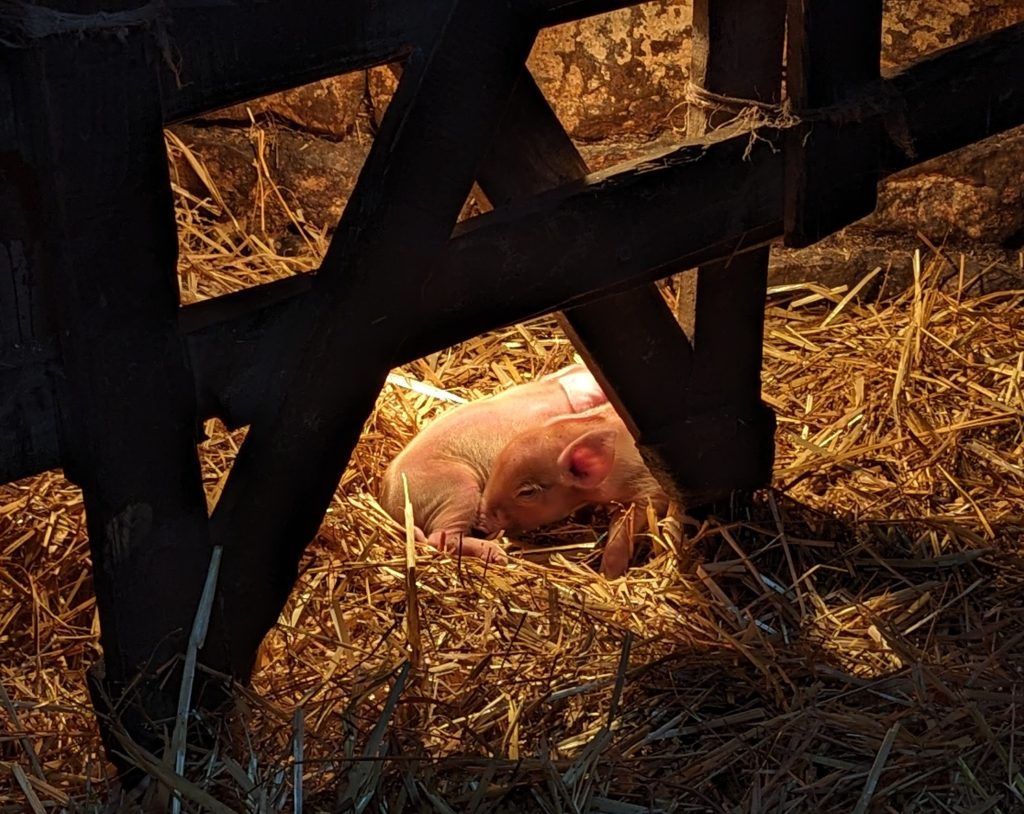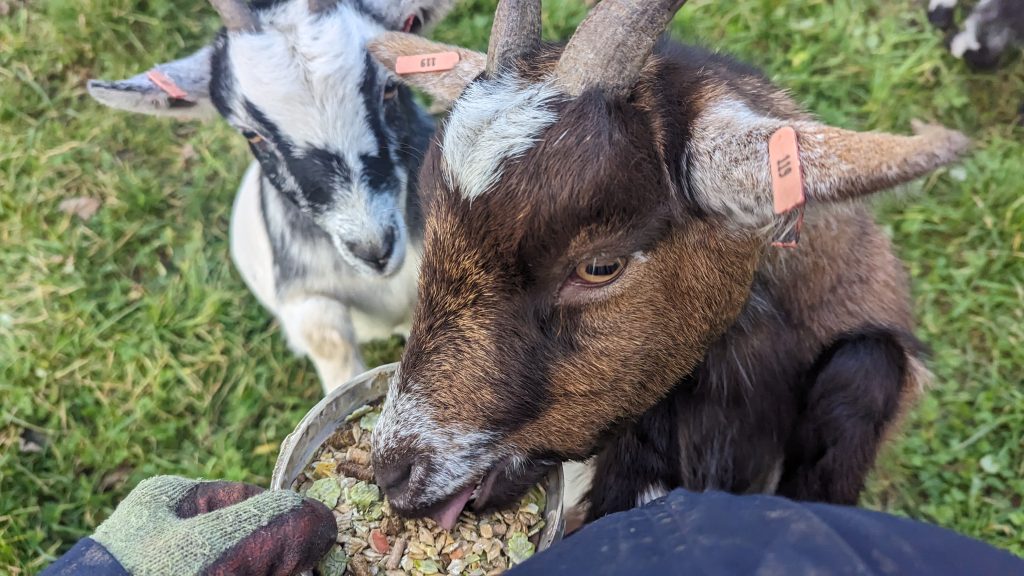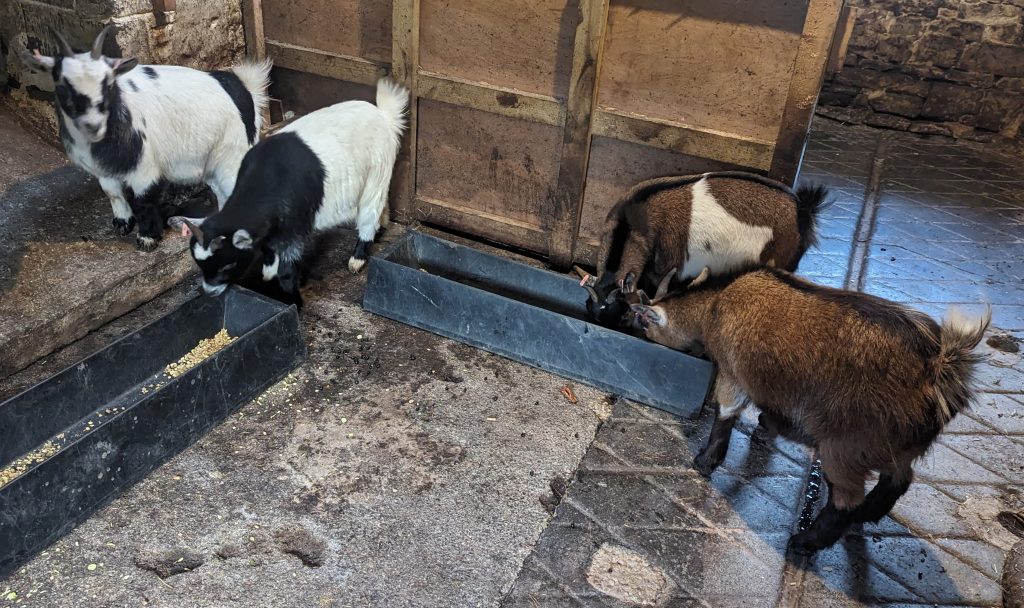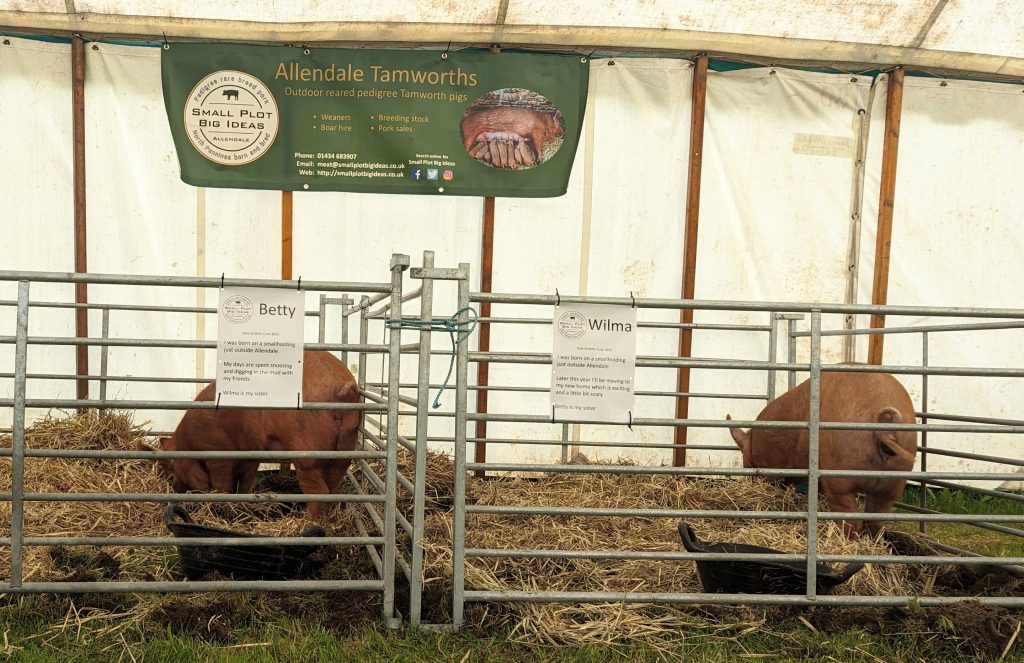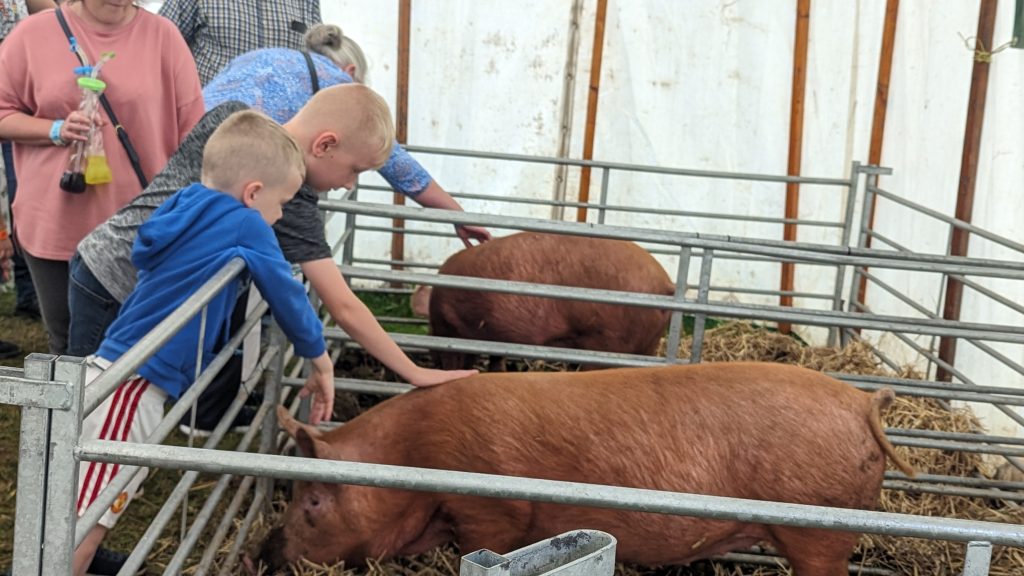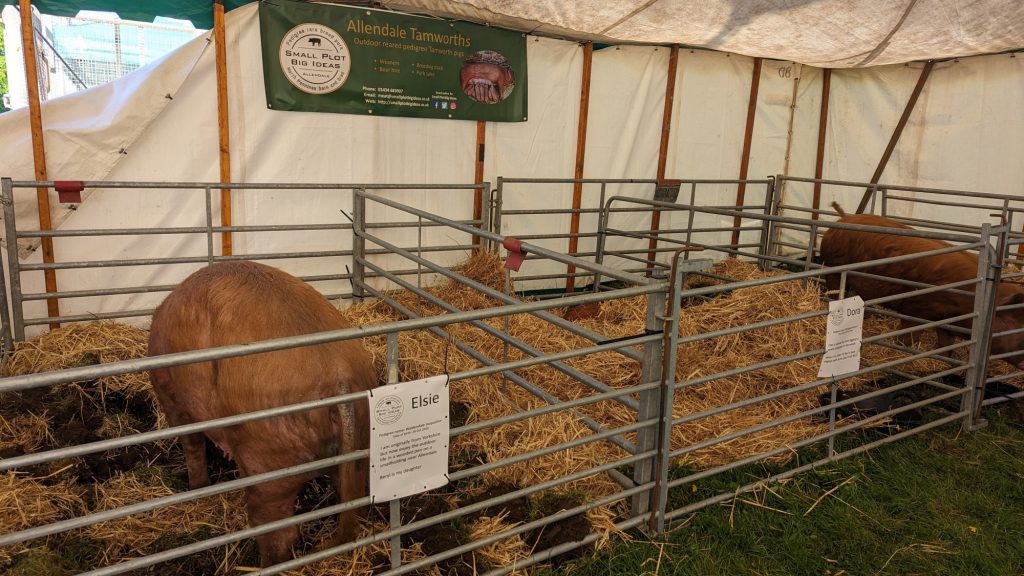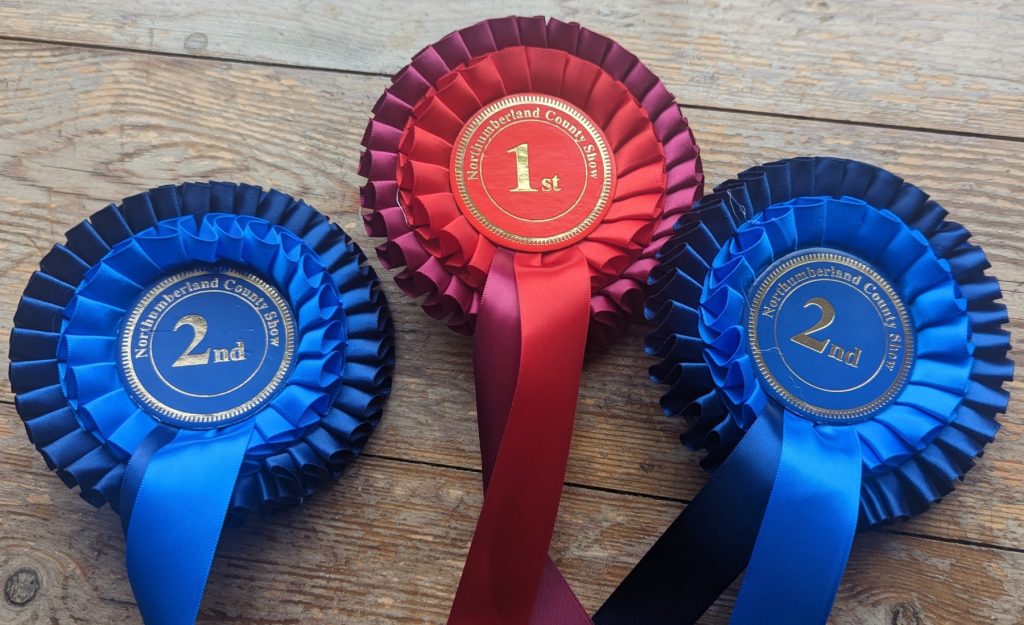After disappointing results with the litters from Dora in January and Beryl in February, I was keeping my fingers crossed for Betty with our final litter of Spring 2024
Initially everything seemed to be positive and I was able to monitor Betty via our camera so that I could leap into action when she started to farrow.
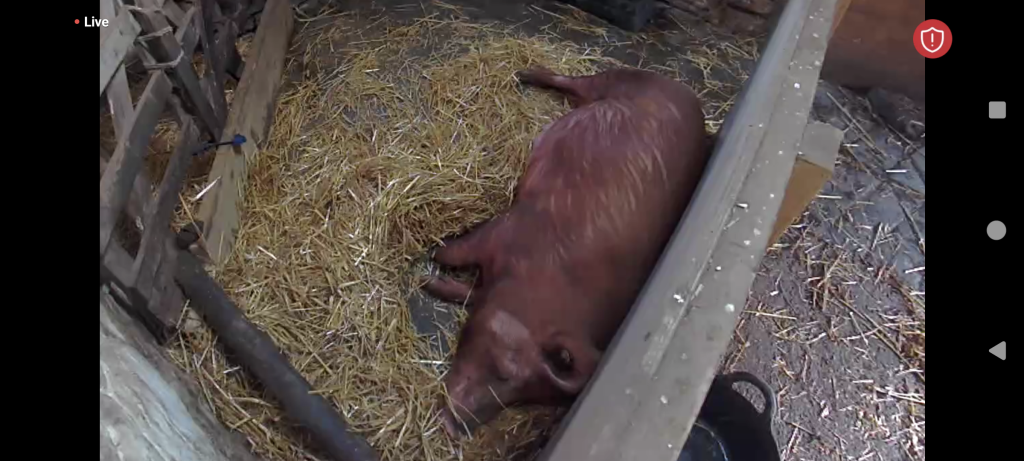
It was fairly clear that she was building up to something and she eventually started to farrow around 3am on Mon 25 March. We don’t get too many farrowings that happen at a reasonable hour but I’m used to the situation now
Over the course of the next few hours Betty delivered a litter of 8 piglets – 4 boars and 4 gilts. The heat lamp did it’s job with keeping the new born piglets warm for the first period and I restrict them to that area initially.
Once they’d all perked up and dried off plus Betty had finished moving around so much while farrowing then I was able to encourage the litter to suckle.
Some were a smaller than others but that’s not too unusual. All seemed well and I was able to leave them at that point so I could get on with my day job
However over the following week a combination of problems meant that we lost nearly all of this litter. Partly due to Betty lying on a few (perhaps they were not nimble enough) and also it soon became clear that Betty didn’t have a lot of milk.
Sadly she now has just a single piglet with her but hopefully her limited amount of milk will all be taken by this little one.
Just in case the milk from Betty isn’t enough or gets any worse, I am also bottle feeding this remaining piglet at intervals through the day. I will eventually try to get it drinking from a tray or bowl but the first priority is to make sure it gets some nutrition
Definitely not the outcome I’d hoped for or expected but all eventualities are possible and it’s a timely reminder that sometimes we don’t get what we wanted despite all our efforts!
